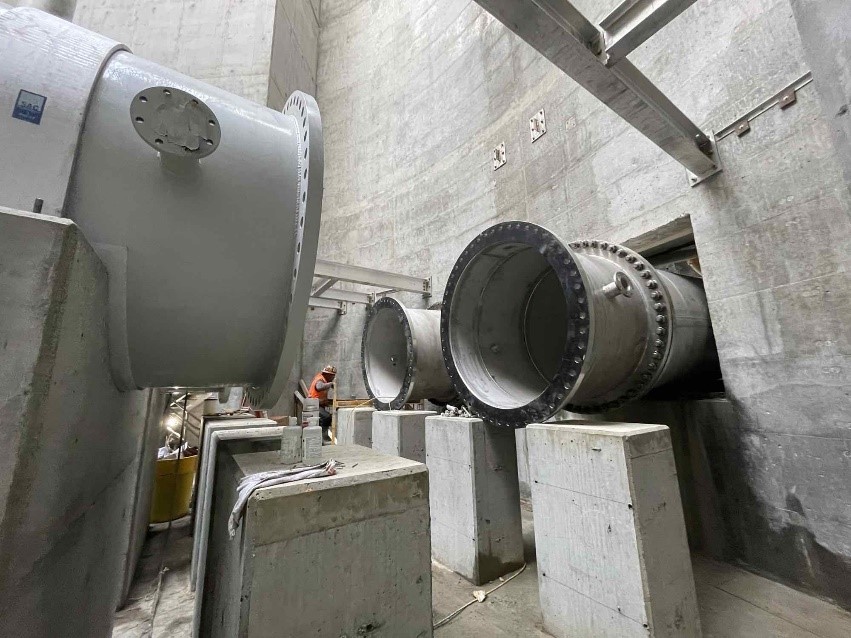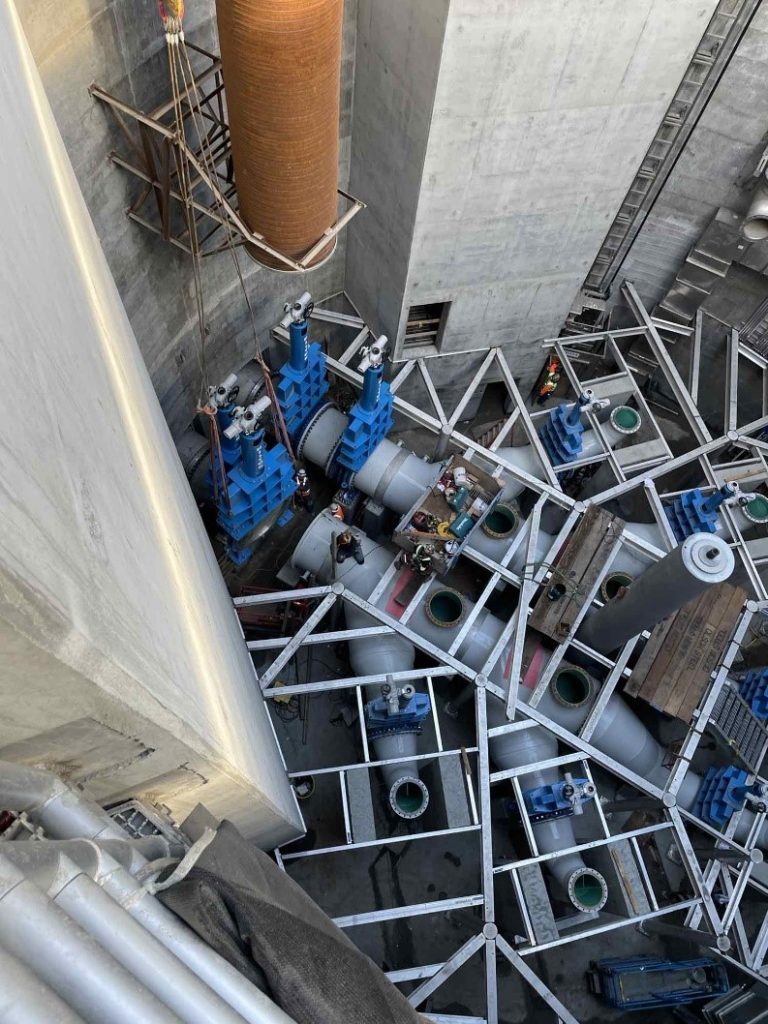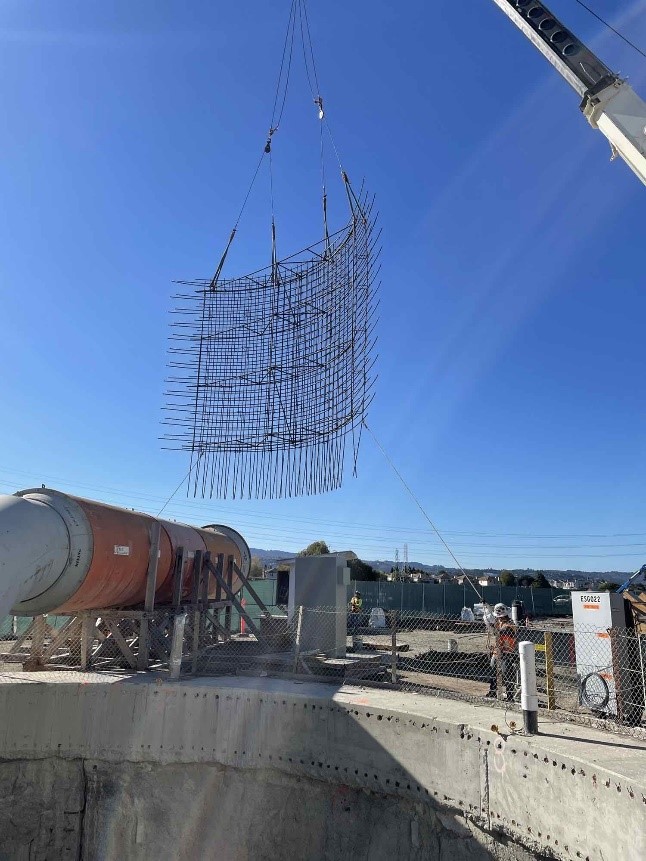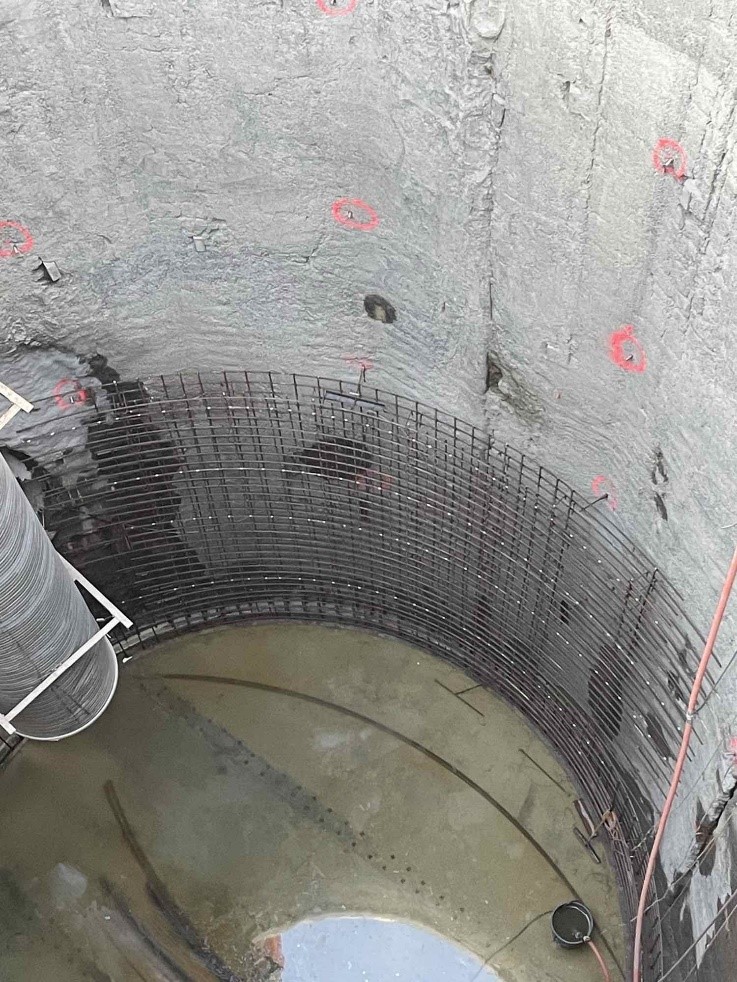This month at the Front of Plant site, SVCW’s contractor partner, Shea Parsons Joint Venture (SPJV), started working on the connection at the interface wall between the Receiving Lift Station (RLS) and Surge and Flow Splitter (SFS) shafts. The connection work involves cutting through a section of the interface wall and connecting the two 60-inch manifolds (two large pipes with three pump suction openings each), to piping installed at the cored holes in the interface wall. When complete, the connection between the two shafts will permit raw wastewater entering the SFS shaft from the gravity tunnel to enter into the manifold, which will be connected to the new RLS pumps. The RLS pumps will convey the raw wastewater flow to the new headworks for preliminary treatment (e.g., screening and grit removal) before the flow enters the main SVCW wastewater treatment plant (WWTP).

During the period when SPJV is completing the final connection between the two shafts, a limited number of SPJV and Quality Assurance staff are allowed within the two shafts, to comply with Cal-OSHA safety requirements related to the gravity tunnel. Once the construction is complete, and the SFS shaft is isolated from the RLS shaft using valves on the inlets to the manifold, the RLS shaft will no longer be under these specific safety requirements.
Once the connection is complete, 60” knife gate valves will be installed on each of the branched piping of the manifold leading to the connection points for each of the six RLS pumps. A total of ten knife gate valves will be installed; one on each of the six RLS pumps and four on the two main inlet connections between the manifold and the SFS shaft. This is done to allow for redundancy in the rare event where one of the knife gate valves on the inlet connection is not able to operate optimally. Knife gate valves are also known as isolation valves and act to isolate flow by using an up and down motion to “close” or “open” the entryway into a pipe. They are useful in wastewater applications as they can handle corrosive, abrasive, and high suspended solids content in the wastewater.

Within the SFS shaft, SPJV is working on constructing the second pass wall. The original wall of the SFS are constructed to serve as support of excavation (SOE), acting as a support structure for the shaft from the surrounding soil. This SOE allows for work to be carried out safely within the SFS shaft. Second pass walls are the interior wall of the shaft, that will serve as the final wall inside the SFS shaft. The lower elevation of this wall surface will be in contact with raw wastewater flowing out of the gravity tunnel, requiring SPJV to apply protective coating to the exposed shaft wall surface. As part of the second pass walls construction, SPJV will be installing reinforcing steel bars, which is also known as rebar, to conform to the structural support design for the second pass walls. The rebar will be curved to match the curvature of the shaft wall and will be lowered into the shaft for installation. Once the rebar is set in place, concrete will be placed inside steel forms and cured to create the second pass walls.

